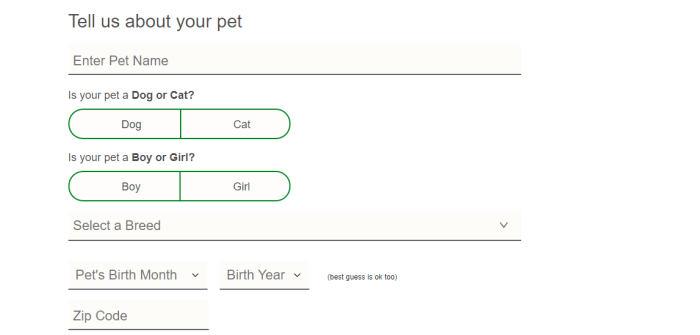Get pet insurance today and give your beloved companion the best possible care. Protecting your furry friend from unexpected vet bills can bring peace of mind. A proactive approach to pet health ensures a happy and healthy life for years to come.
Comprehensive pet insurance policies cover routine checkups, preventative care, and sudden illnesses or injuries. This proactive approach helps prevent financial strain during times of unexpected medical expenses.
Protecting your furry friend is crucial, and pet insurance can provide vital financial support in case of unexpected medical emergencies. This comprehensive guide explores the benefits, types, and costs associated with pet insurance, helping you make an informed decision for your beloved companion.
Understanding the Importance of Pet Insurance
Unexpected veterinary bills can quickly drain your finances. Pet insurance acts as a safety net, covering a portion or all of the costs associated with illnesses, injuries, and surgeries. This financial protection can be invaluable for maintaining your pet’s health and well-being, regardless of whether you’re a pet owner with limited income or a high-earning professional. It allows you to focus on your pet’s recovery without worrying about overwhelming expenses.
Common Pet Health Issues Covered by Insurance
Pet insurance policies typically cover a wide range of common pet health issues, including:
- Accidents (falls, car accidents)
- Illnesses (cancer, diabetes, heart conditions)
- Surgical procedures (spaying/neutering, tumor removal)
- Preventative care (vaccinations, check-ups)
However, specific coverage varies between policies. Always carefully review the policy details and exclusions before purchasing.
Types of Pet Insurance Policies: Get Pet Insurance Today
Different insurance providers offer various policy types tailored to different needs. Understanding these options will help you choose the best fit for your pet and your budget.
Accident-Only vs. Accident and Illness, Get pet insurance today
Accident-only policies cover only injuries, while accident and illness policies extend coverage to illnesses as well. The latter offers broader protection, but comes at a higher premium.
Breed-Specific Policies
Some insurance providers offer breed-specific policies, catering to breeds known to be prone to certain health conditions. This can result in either lower premiums or more comprehensive coverage, but research is vital.
Premium-Based Policies
Policies are often tiered based on premiums, offering varying levels of coverage and benefits. Understanding the differences between these tiers is essential for making an informed decision.

Source: nsuitelangana.org
Factors to Consider When Choosing a Policy
Several factors influence your decision, including your pet’s age, breed, pre-existing conditions, and your budget.
Pet’s Age and Breed
Younger pets generally have lower premiums than older ones. Similarly, breeds known for specific health issues may have higher premiums.
Pre-Existing Conditions
Policies may or may not cover pre-existing conditions. Carefully review the policy wording to ensure you understand the coverage limitations.
Your Budget
Insurance premiums vary significantly between providers. Consider your budget when evaluating different options.
Comparing Pet Insurance Quotes
Comparing quotes from various insurance providers is crucial to finding the best value for your money. Use online comparison tools to simplify the process.
Tips for Finding the Best Deal
Review the terms and conditions carefully, including exclusions, deductibles, and reimbursements. Understand the claims process and what is required for approval.
Understanding Policy Exclusions
Policies typically have exclusions, defining what isn’t covered. Familiarize yourself with these exclusions before purchasing.
Claims Process and Reimbursements
Understanding the claims process and reimbursement procedures is vital. Know what documentation is needed and how long the claims process typically takes.
Frequently Asked Questions (FAQ)
- Q: How much does pet insurance cost?
A: Premiums vary based on factors like your pet’s age, breed, and the chosen policy. Compare quotes from different providers to find the best value.
- Q: What types of illnesses and injuries are covered?
A: Most policies cover accidents and illnesses, but specific coverage can differ. Review the policy details carefully.
- Q: How long does the claims process take?
A: Processing times vary by insurer but are generally within a reasonable timeframe. Expect delays if necessary documentation isn’t provided promptly.
- Q: What are common exclusions?
A: Common exclusions include pre-existing conditions, cosmetic procedures, and certain illnesses that are considered preventable.
Conclusion
Investing in pet insurance is a proactive step towards ensuring your pet’s health and well-being. By carefully considering your options, comparing policies, and understanding the coverage, you can find the right plan to provide the necessary financial support for your furry friend.
Call to Action (CTA)
Ready to protect your beloved pet? Visit our website today to get a free quote and start your pet insurance journey!
Disclaimer: This information is for general knowledge and informational purposes only, and does not constitute financial or medical advice. Always consult with a qualified professional for personalized guidance.
Securing pet insurance today is an investment in your pet’s well-being and your peace of mind. It provides financial security, allowing you to focus on providing the best possible care for your furry family member. Explore the various options and choose the plan that best suits your pet’s needs and your budget.
FAQ Section
Is pet insurance expensive?
Pet insurance premiums vary based on factors like your pet’s breed, age, and pre-existing conditions. Compare quotes from different providers to find the most suitable and affordable plan.
What types of accidents or illnesses are covered?
Most policies cover a wide range of accidents and illnesses, including injuries, surgeries, and chronic conditions. However, specific exclusions may apply, so review the policy details carefully.

Source: pangovet.com
How do I file a claim?
Filing a claim typically involves gathering necessary documentation, such as medical records and receipts. Follow the insurer’s instructions and submit the required information to initiate the claim process.
Can I add a new pet to my existing policy?
Adding a new pet to your existing policy is often possible. Contact your insurance provider to understand the process and any additional requirements or costs.
